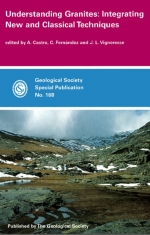Добрый день, Коллеги. Важное сообщение, просьба принять участие. Музей Ферсмана ищет помощь для реставрационных работ в помещении. Подробности по ссылке
Understanding granites: integrating new and classical techniques / Понимание гранитов: интеграция новых и классических методов
Granite magmatism represents a major contribution to crustal growth and recycling and, consequently, is one of the most important mechanisms to have contributed to the geochemical differentiation of the Earth's crust since the Archaean times. The important role of granites has been acknowledged from the times of James Hutton, being an important part of Mutton's (1785) work The Theory of the Earth. Since that time, advances in Earth Sciences and the development of analytical instruments have produced a vast amount of data from granite terrains around the world (see, for instance, the Proceedings of the Hutton symposia, 1988, 1992, 1996). However, many problems still remain unsolved.There have been several important controversies concerning granites during the last 50 years. One of the best remembered was that led by H. H. Read and N. L. Bowen around the 1950s (Read 1958). The end of this obscure controversy, full of misunderstandings and with some rhetoric, ended with the publication of the classic memoir by O. F. Tuttle & N. L. Bowen (1958) entitled Origin of granites in the light of experimental studies in the system NaAlSi3O8-KAlSi3O8-SiO2-H2O. The main conclusion of
this study was that granitic liquids may be generated from melting of quartzo-feldspathic rocks in excess water, at depths of '... 12-21 km in geosynclinal areas where the initial gradient is on the order of30°C/km' (Tuttle & Bowen 1958, p. 2). Detailed phase relationships in the granite system were determined in this seminal work. However, the conditions for the generation of granite liquids postulated by Tuttle & Bowen seemed unlikely to occur naturally: the composition of the source must be quartzo-feldspathic and water must be in excess <...>




